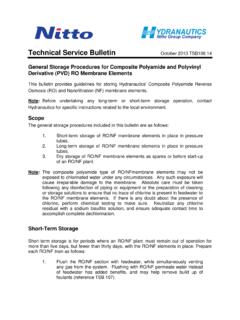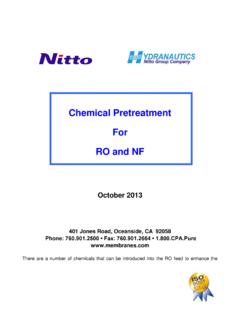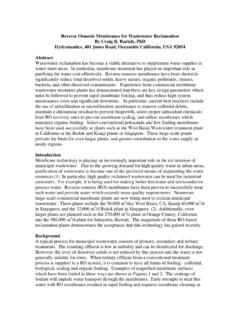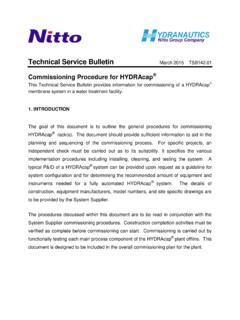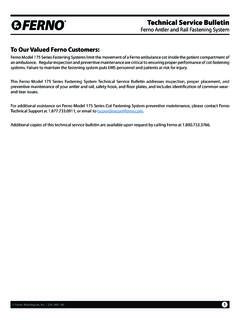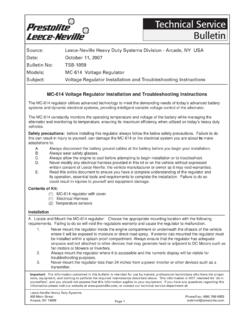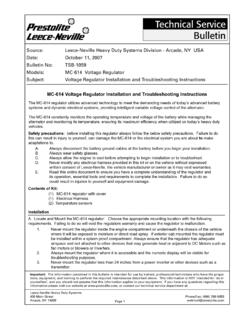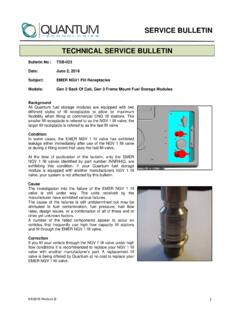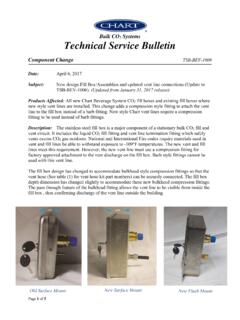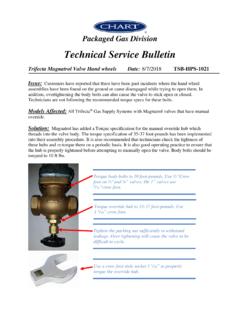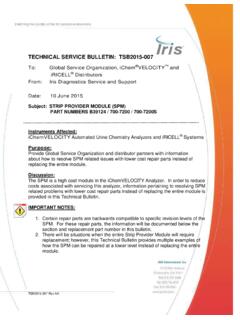Transcription of Technical Service Bulletin - membranes.com
1 Technical Service Bulletin February 2017 TSB Bubble Testing of RO Membrane Elements This Bulletin provides general information about how to perform bubble testing of RO membrane elements to determine if the mechanical integrity of the element has been compromised. RO elements are constructed using glue lines to seal the membrane leaves, and when subjected to permeate backpressure, extreme fouling, etc. these glue lines can become damaged leading to reduced rejection and increased permeate flow in the RO system. Determining Suspect Elements Permeate conductivities should be recorded for each pressure vessel. Any pressure vessel that is giving much higher conductivity values that the parallel pressure vessels in the system should be checked.
2 A probing of the vessel may be performed (see TSB114) if desired. The elements should then be removed and all interconnectors, adapters, and o-rings should be inspected to insure that they have not been broken or damaged. Each element can then be bubble tested. Bubble Test Equipment The equipment required (see Photo on next page) consists of a bicycle air pressure pump, 0 15 psi pressure gauge, PVC adapters (see Drawing M11168-A), and some PVC or brass fittings. In addition, a tank at least 44 inches high ( meters) is required to submerge a 40 inch element. In some instances, an element packaging bag can be used to submerge the element. Parts are NOT sold by Hydranautics. Bubble Test Procedure The idea behind the bubble test is to put a small amount (3 5 psi) of pressure (NEVER exceed 5 psi during the bubble test) into the permeate tube while the element is submerged vertically under water.
3 This is accomplished by inserting a solid PVC adapter plug in the permeate tube on the bottom end, and another PVC adapter (with a hole drilled into the center which is attached to the air line from the pump). When the element is completely submerged, slowly start pumping the air pump, making sure that you never exceed 5 psi. For the first minute or two, air that is entrapped in the feed TSB Page 2 channel spacer will escape. But after this minute or two, an element with good mechanical integrity will cease to emit bubbles and will hold the pressure steady. If the element continually emits bubbles and cannot hold the air pressure, then the element exhibits compromised mechanical integrity. You can visually inspect where the bubbles are escaping from to determine the location of the damage.
4 Elements that have been mechanically damaged cannot be repaired. Example test apparatus with pump, pressure gauges, fittings, and adaptors. Parts are NOT sold by Hydranautics. TSB Page 3 HYDRANAUTICS 401 Jones Rd. Oceanside, CA 92058 Tel# (760) 901-2500 Fax# (760) 901-2578 email.

